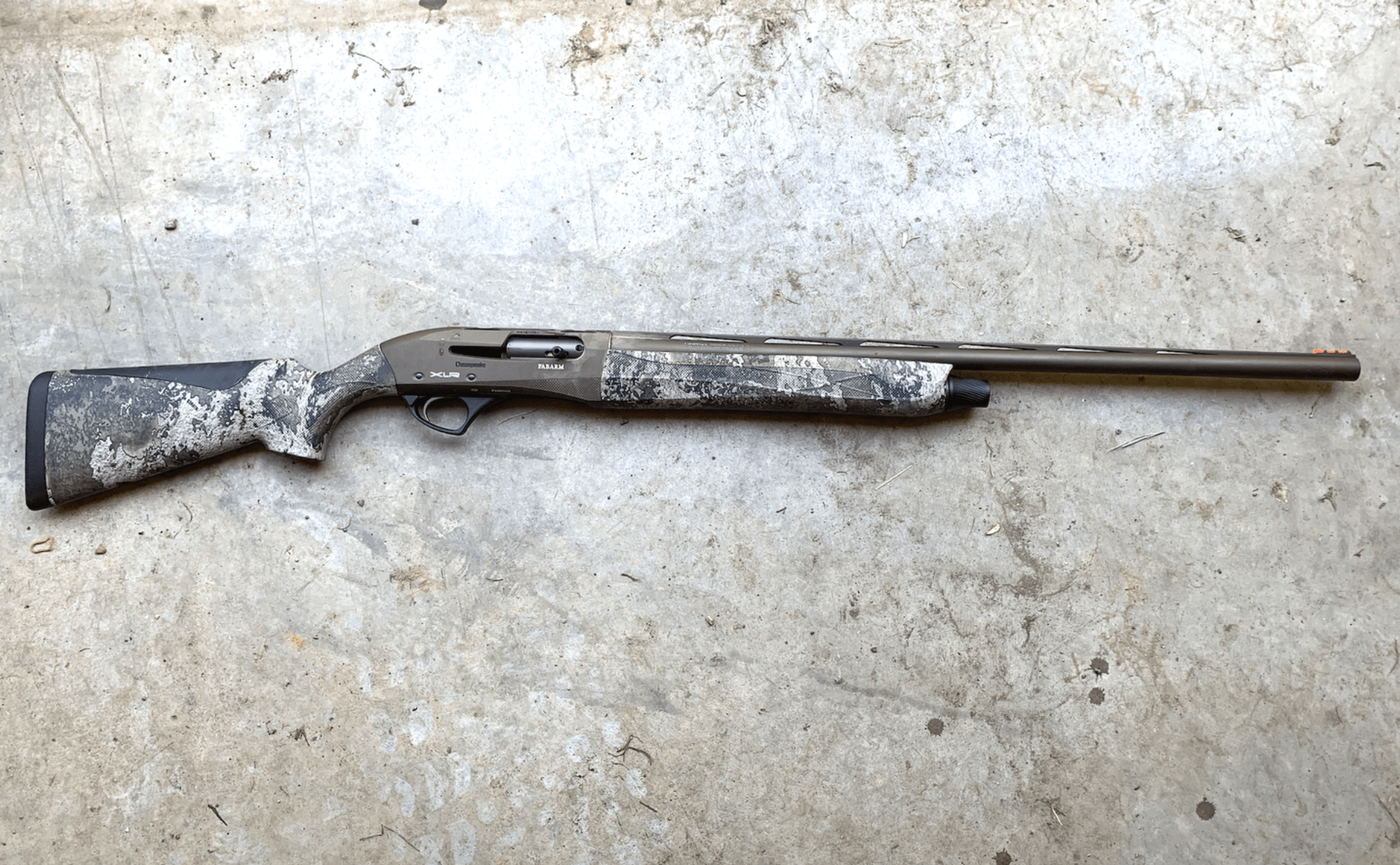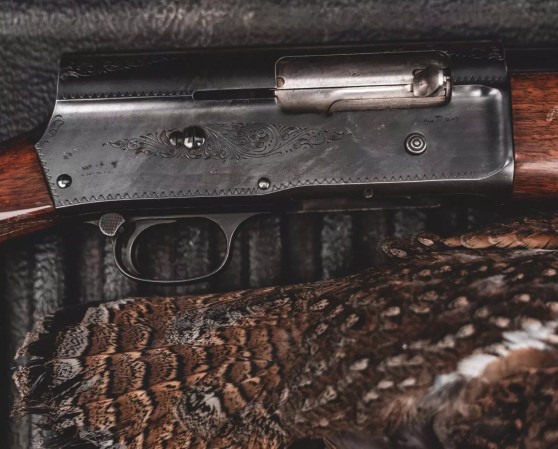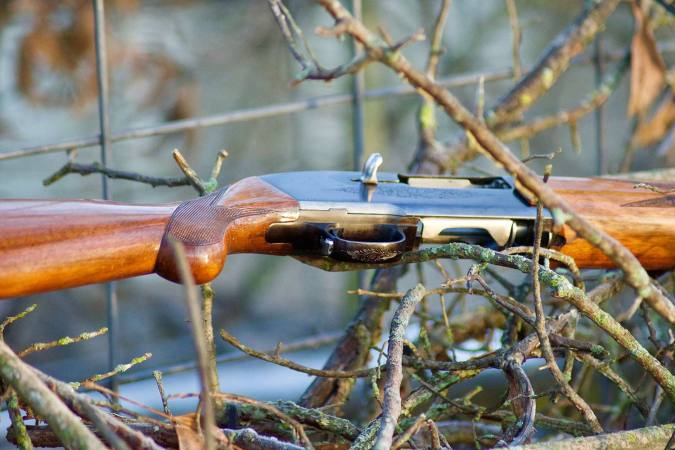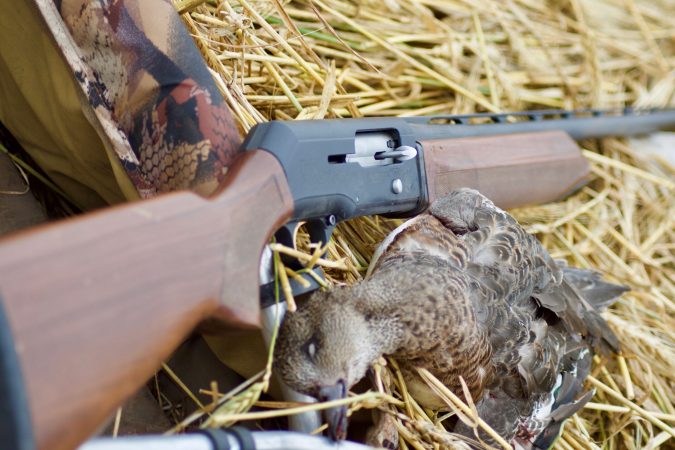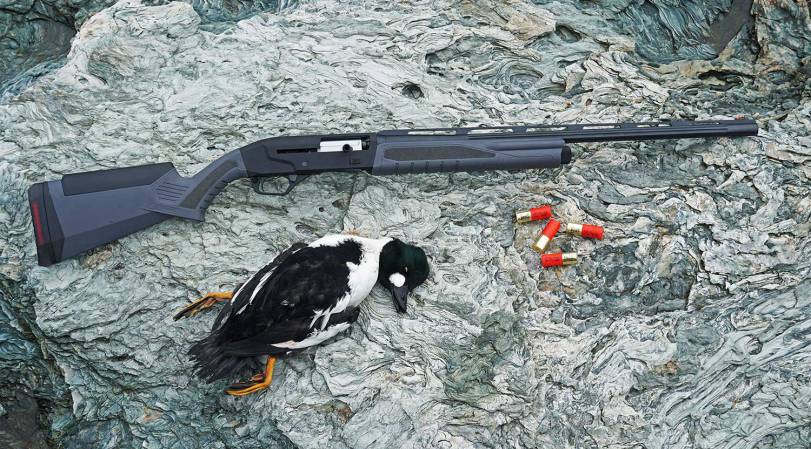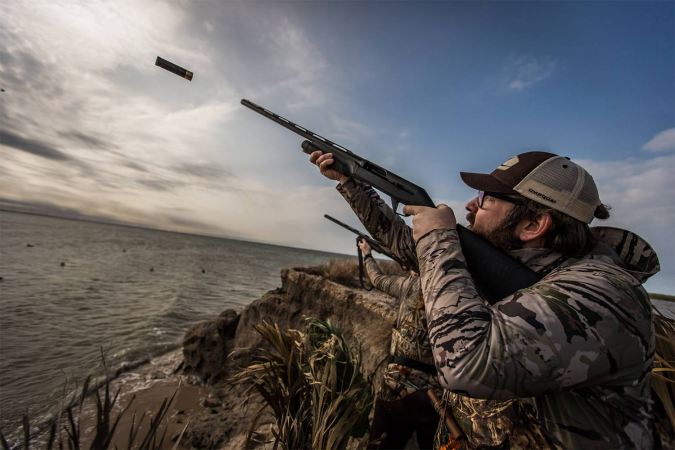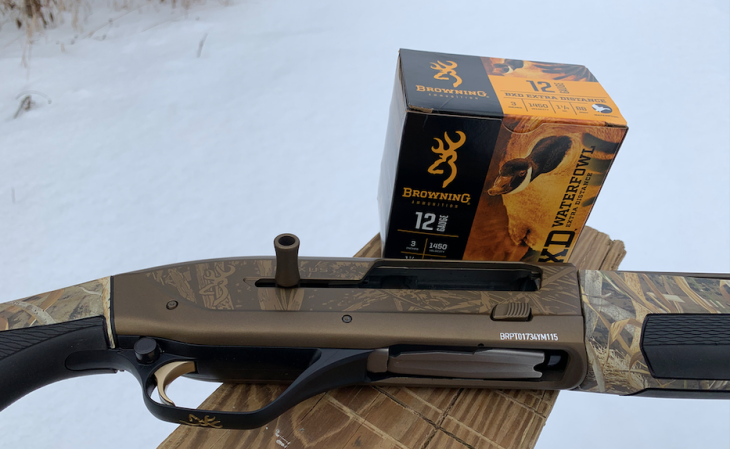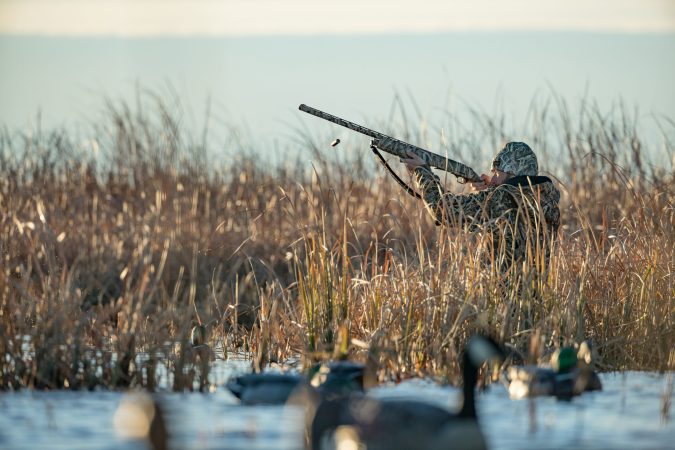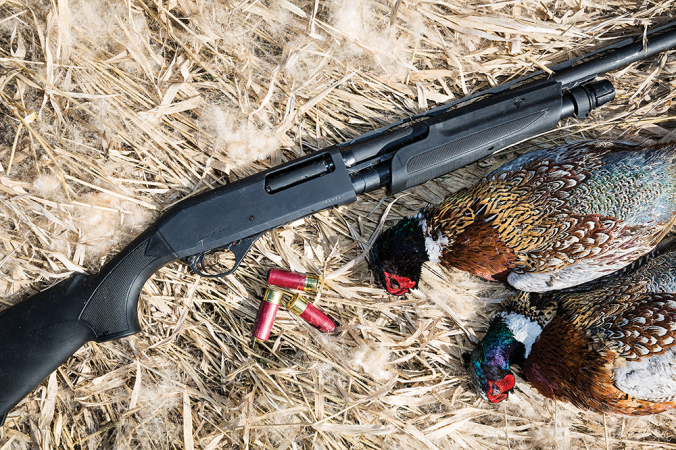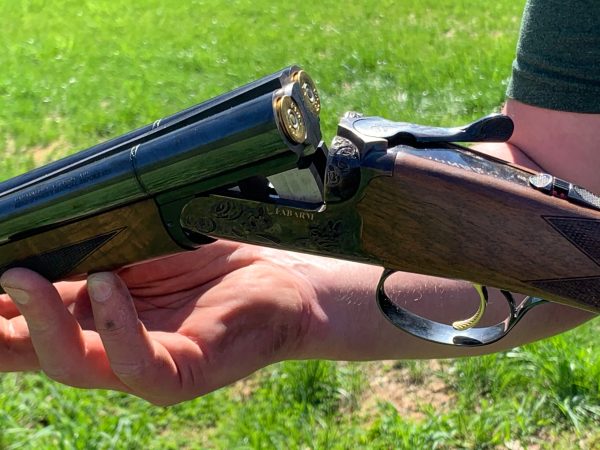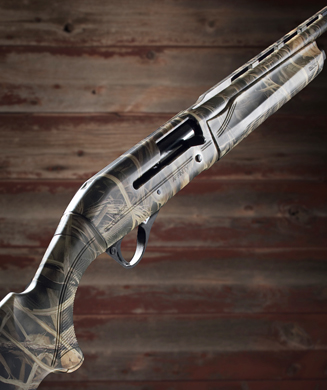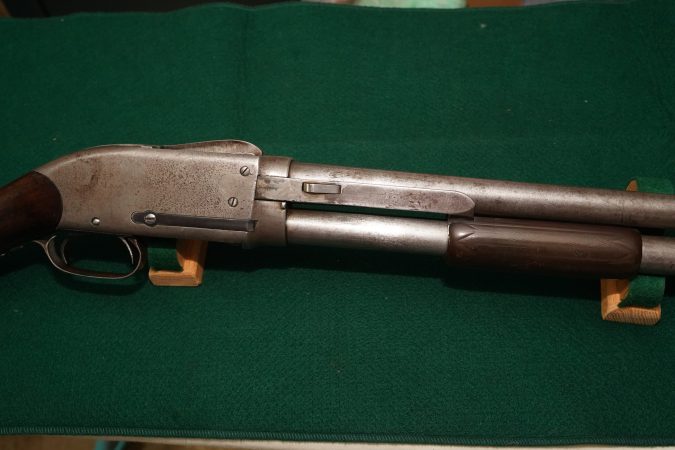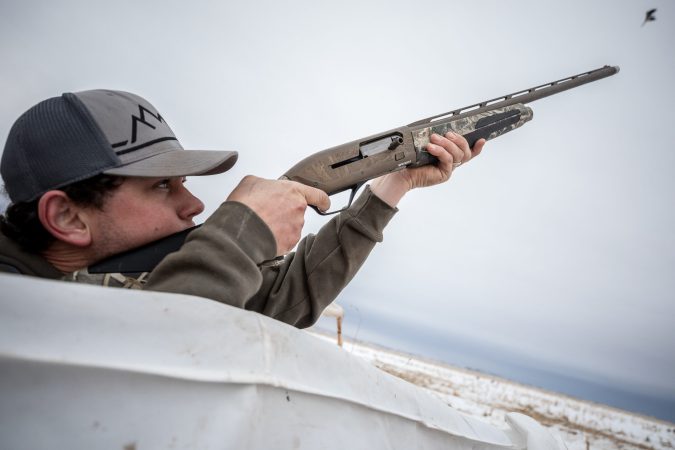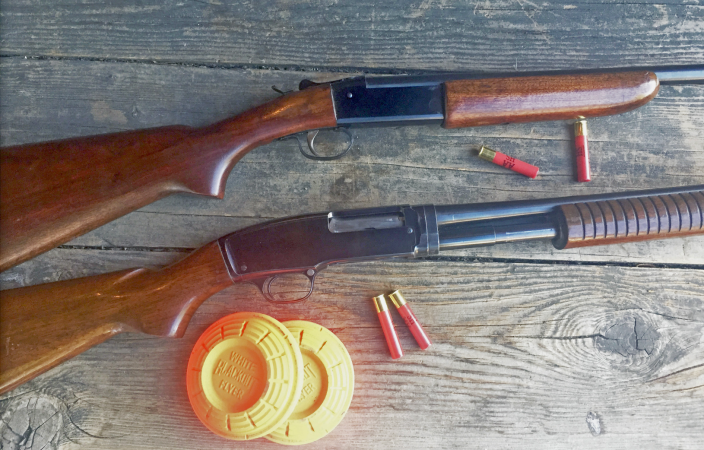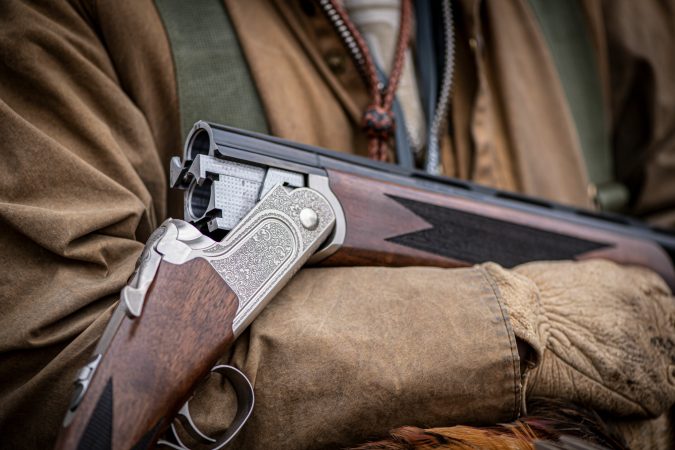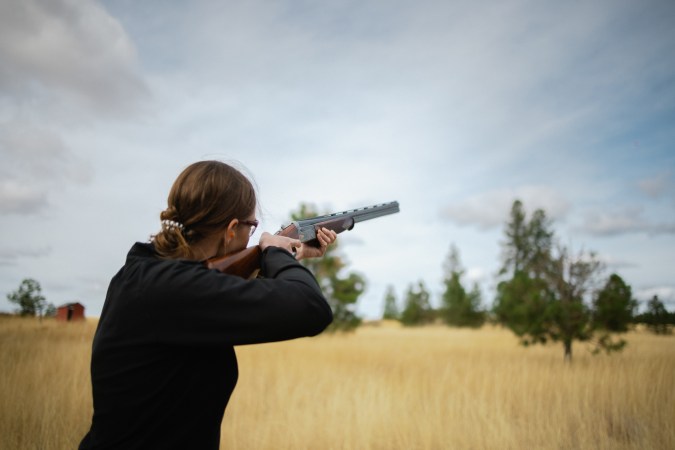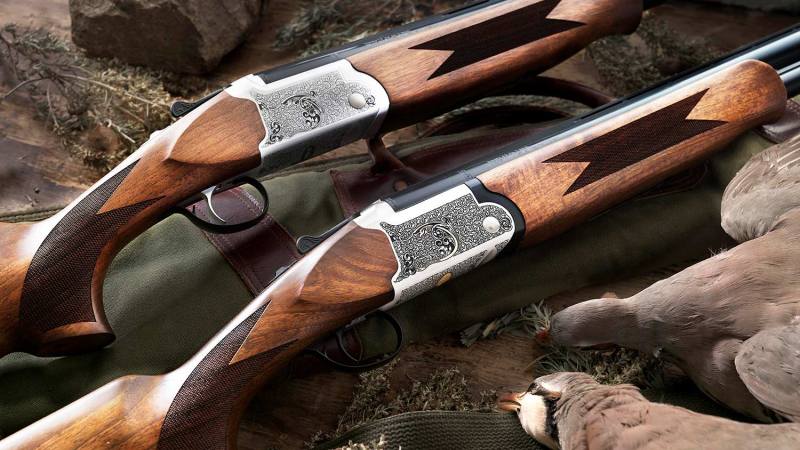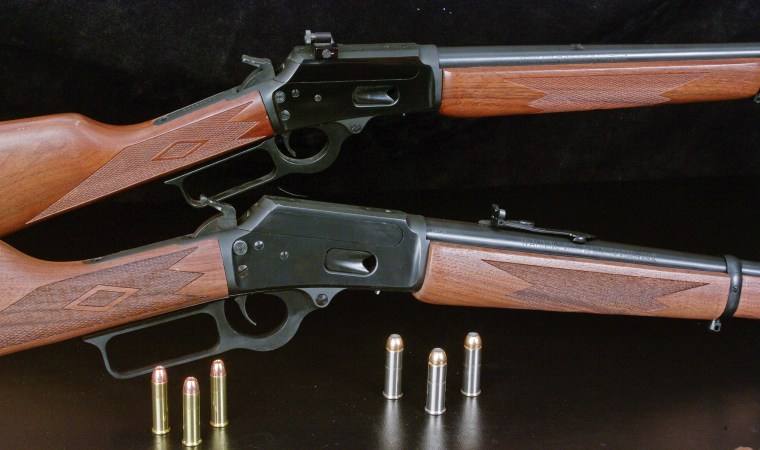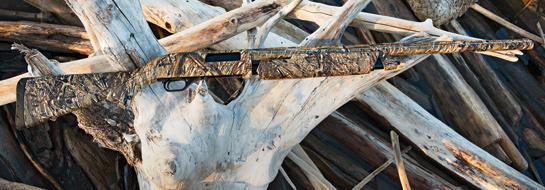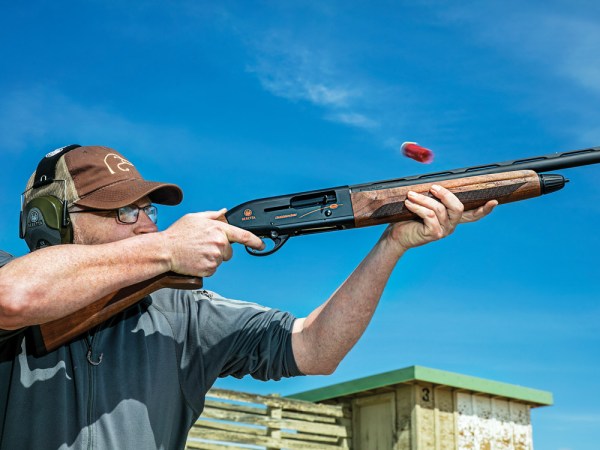We may earn revenue from the products available on this page and participate in affiliate programs. Learn More ›
If you’re a duck hunter and don’t know the name Fabarm, you’re not alone. In fact, I would venture to guess most waterfowlers have never seen one of these gas-driven semi-autos in the blind. But its absence in marshes across the U.S. has more to do with availability—not reliability—of the Italian-made smoothbores. For instance, the Fabarm XLR5 Chesapeake I just finished testing was one of the most capable and well-made auto-loaders I have shot in recent memory. Fabarm shotguns simply haven’t had a consistent importer until recently when Caesar Guerini bought the 122-year-old company and expanded the factory in Brescia.
Fabarm has a long history of building smoothbores that cater specifically to clay-shooting enthusiasts. But that has begun to change over the last decade with the addition of the L4S (an upland auto-loader) and the XLR5, which includes the Waterfowler and Chesapeake. However, the XLR5 was initially a sporting shotgun with an adjustable rib and trigger pull weight so skeet, trap, and sporting clays shooters could fine-tune the gun to their liking. You don’t get such features in the Chesapeake. But what’s beneficial about a clays gun that evolves into a hunting platform is that it almost always shoots accurately (at least that’s my take after years of shooting a variety of shotguns).
My best guess is the engineers who build clays guns put gun fit in front of everything else (or near the very top of the chart), and that’s why those smoothbores often outshine dedicated waterfowl shotguns on the pattern board and at the range. I certainly found that to be the case when I recently shot the Chesapeake on paper and at the skeet field.
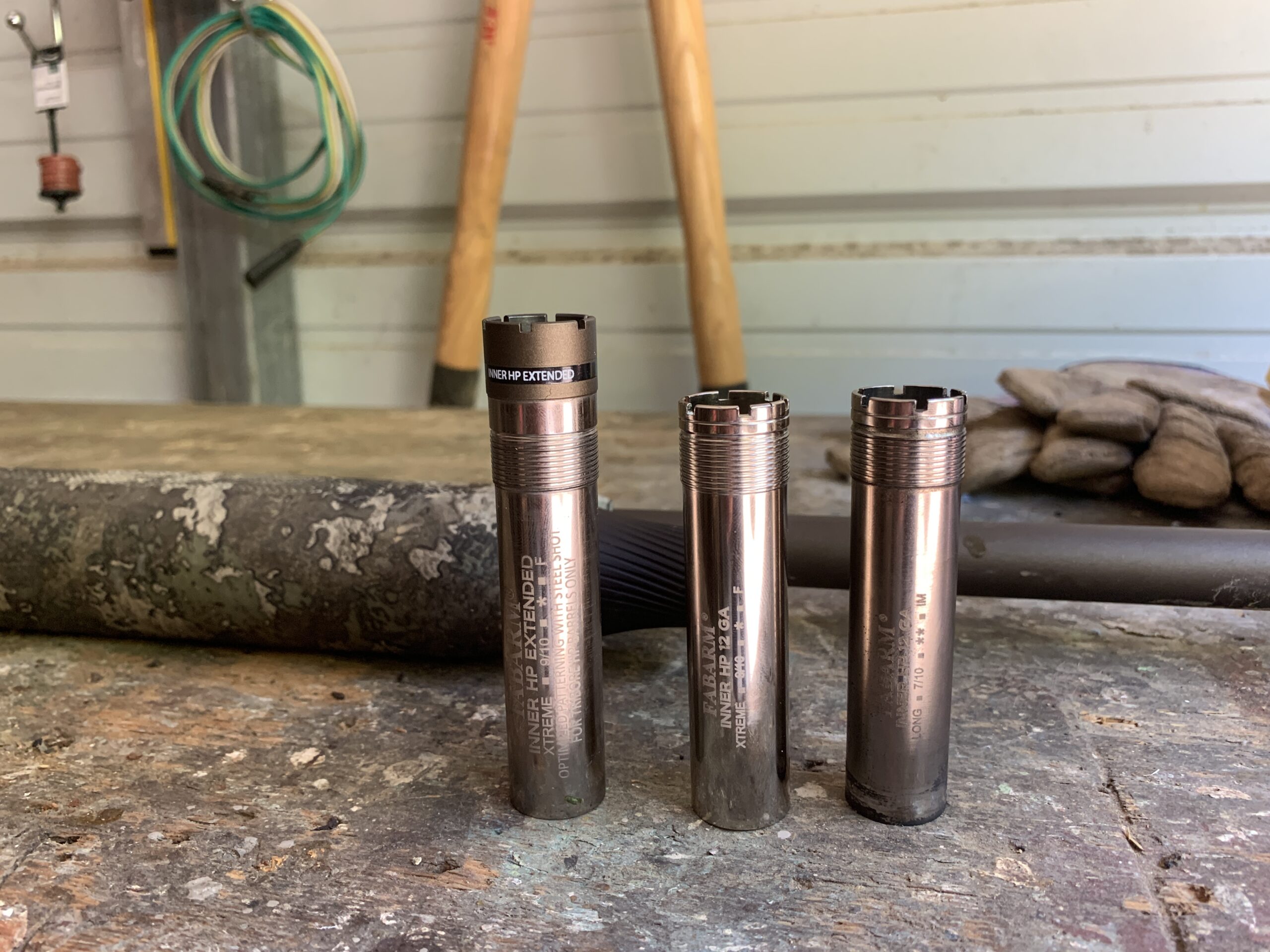
Fabarm XLR5 Chesapeake Specifications
- Gauge: 12
- Action: Semi-auto
- Capacity: 4+1
- Chamber: 3-inch
- Barrel type: Tribore HP steel, vent rib
- Barrel length: 28-inch (tested), 30-inch
- Chokes: M, IM, F, and Exis DK full (extended choke)
- Front sight: Hi-Viz Fiber-optic
- Length: 48½ inches
- LOP: 14¼ inches
- Trigger pull: 3 pounds, 13 ounces
- Overall weight: 6.8 pounds
- MSRP: $1,995 (right-hand); $2,200 (left-hand)
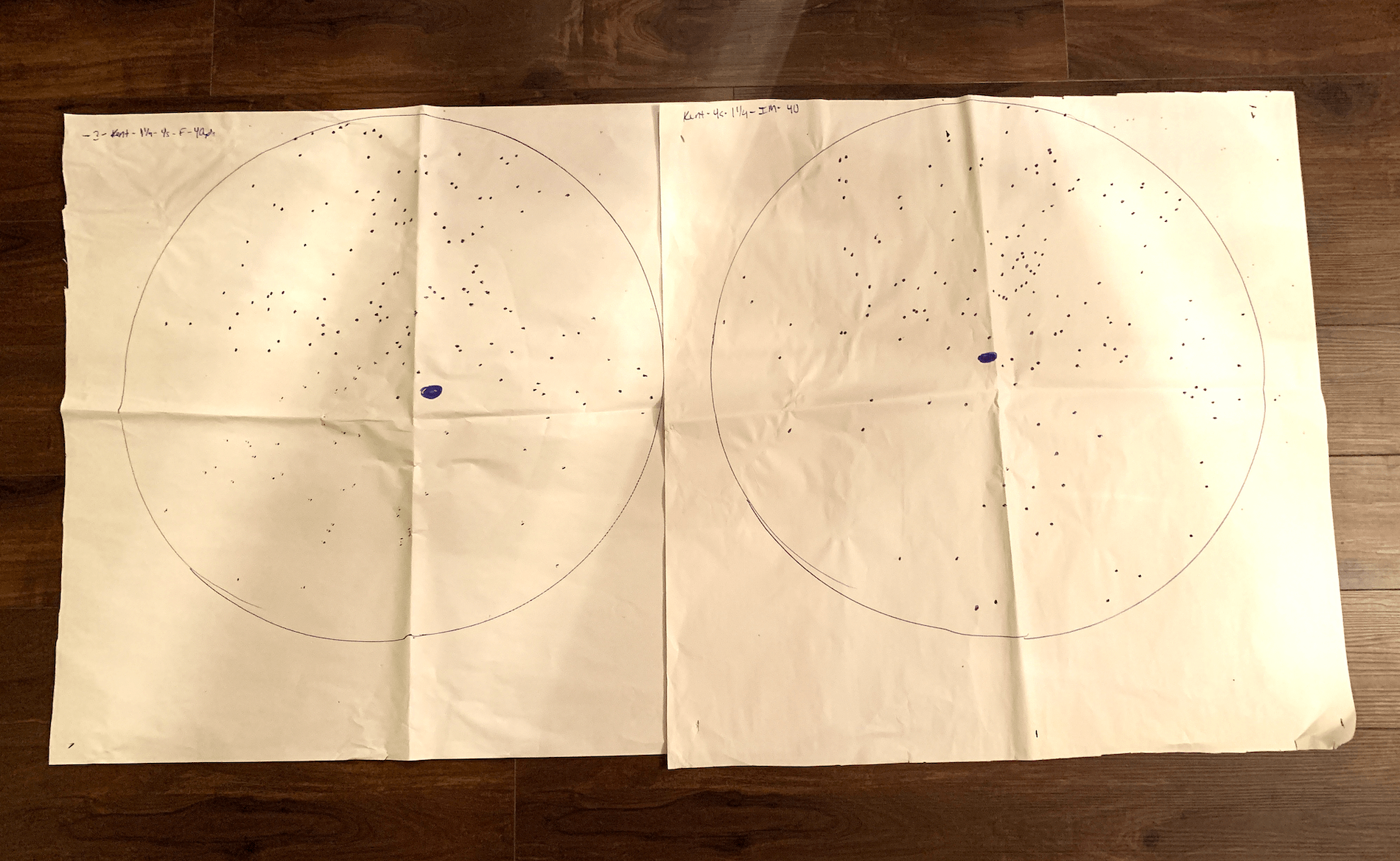
How the Fabarm Chesapeake Patterned
The Chesapeake comes with four different chokes, an Exis DK extended full and flush fitting, modified, improved modified and full chokes. There was no difference in constriction of the flush and extended full chokes at the muzzle (both were .712 when measured with a digital caliper). I shot patterns from 40 yards with the IM and extended full chokes with three different 3-inch loads: Kent Fasteel 2.0 1¼-ounce No. 4s, Browning BXD 1¼-ounce BBs, and Federal MeatEater Bismuth 1 3/8-ounce No. 4s.
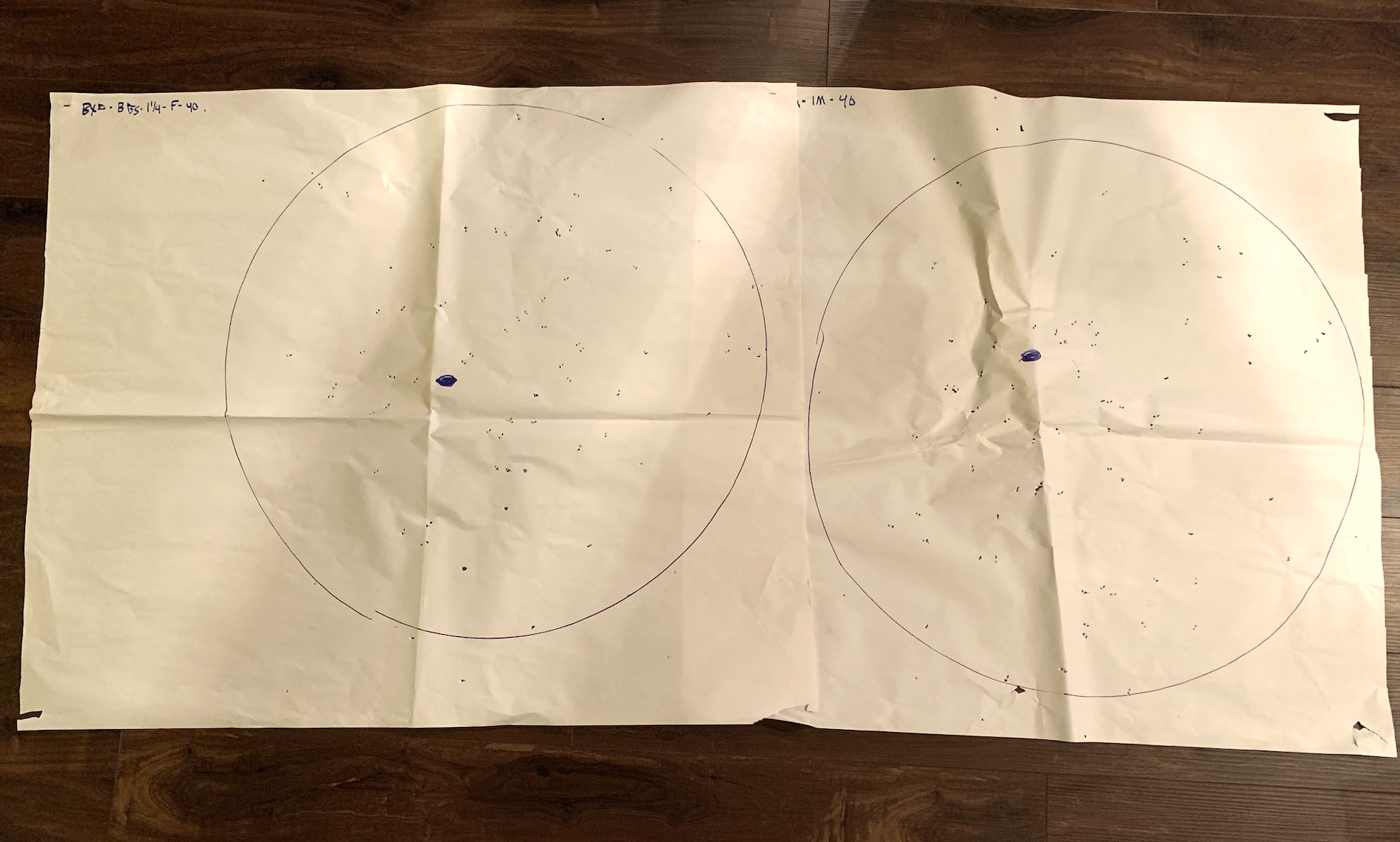
Fabarm’s Inner HP chokes are safe for steel shot, so you can shoot steel pellets of any size through them, including the full choke. The Italians made this possible by lengthening the choke tubes (3.233 inches verified by a digital caliper) and using a hyperbolic curved conical section inside the choke, which causes less friction as the payload passes through the choke. To be clear, it’s safe to shoot smaller steel shot (no larger than No. 4s) through any full choke. It’s the larger shot that can cause damage to the choke tube or bulge your shotgun’s barrel in a phenomenon known as bridging, in which two pellets become interlocked as they travel down the barrel. Because steel shot is so hard—unlike lead or bismuth—there is nowhere for the energy to go, resulting in barrel damage.
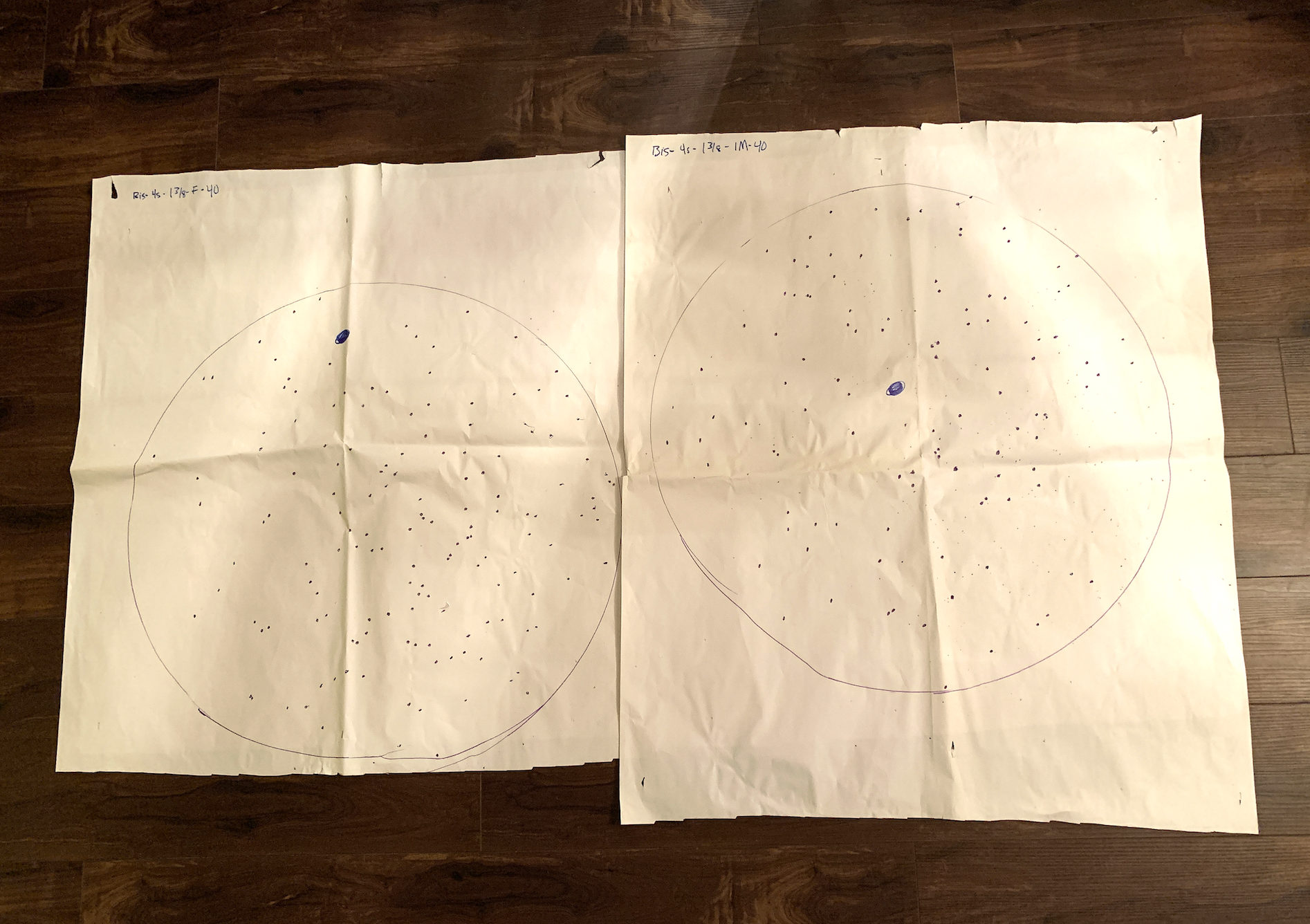
My patterns with the two steel and bismuth loads were all slightly different; not uncommon when you’re shooting multiple shot types from three separate ammo makers. The Kent 4s consistently printed 80 percent above my point of aim and 20 percent below; the Browning BBs yielded a 50/50 pattern; and the Federal Bismuth 4s shot 50/50 through the IM choke but impacted at a much lower 10/90 through the extended full. I shot each brand of shotshell at least five times through both chokes to ensure pattern consistency inside a 30-inch circle but ran 15 shells through the full choke-Federal combination because of the low pattern results. I wanted to make sure I wasn’t taking errant shots.
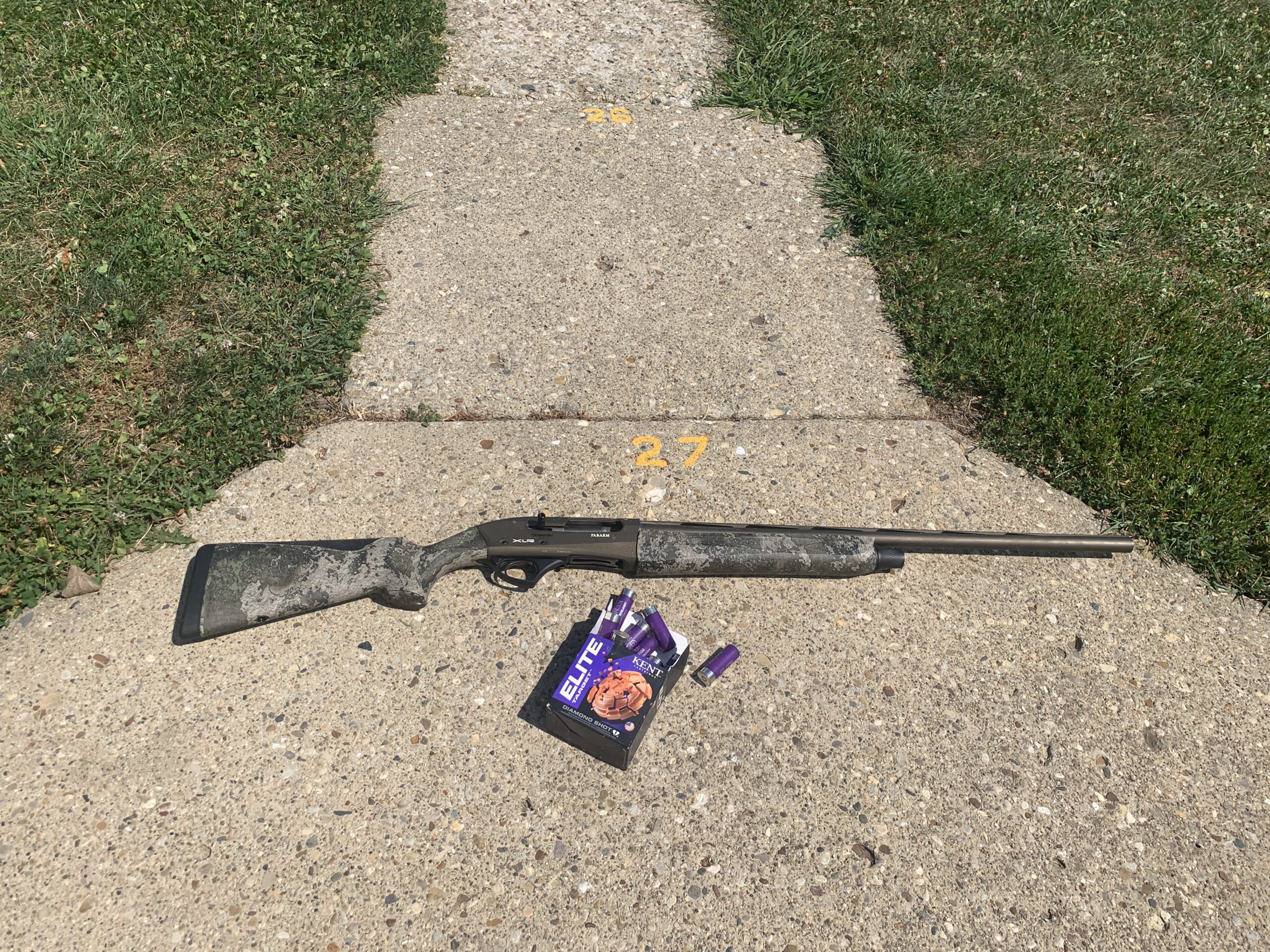
Testing the Fabarm Chesapeake
Duck guns get dirty, so after running 50 rounds through the Chesapeake on the pattern board, I picked up a dirt clod, crumbled it in my hand and threw it into the open action of the gun. After dumping the excess dirt out, I loaded three shells (a mix of the Kent 4s and Browning BBs) and fired them consecutively. The Fabarm had no issue cycling, but as I loaded up again, the bolt-release button began to stiffen, and I had to press hard to get the action to close and chamber the first 3-inch shell. I ran three more rounds through the smoothbore without a hitch and shot nine more shells, including three with the gun at my hip to try and get it to malfunction. But the gun never failed me that day. The action did slow a bit, but nothing more.
The next afternoon, I took the Fabarm to the skeet range without cleaning it. I loaded two 2¾-inch 1-ounce Kent Elite steel No. 7s at station one and called for the bird. As I fired the first shot, I could see the action sticking open for a moment and then closing. I called for the incoming bird, shot it, and then loaded two more shells for the double. The action ran sluggish but cycled. At station two, the bolt would not chamber the second shell as I tracked the low house bird, trying to complete the double. I removed the hung-up shell and worked the action repeatedly, trying to clear any grit I could from the gun. From that point on the Fabarm slowly improved, which was a surprise. I’ve never had a shotgun that jammed perform progressively better without a cleaning. But the Chesapeake’s cycling improved the more I shot it. By the end of my first round, it was functioning perfectly.
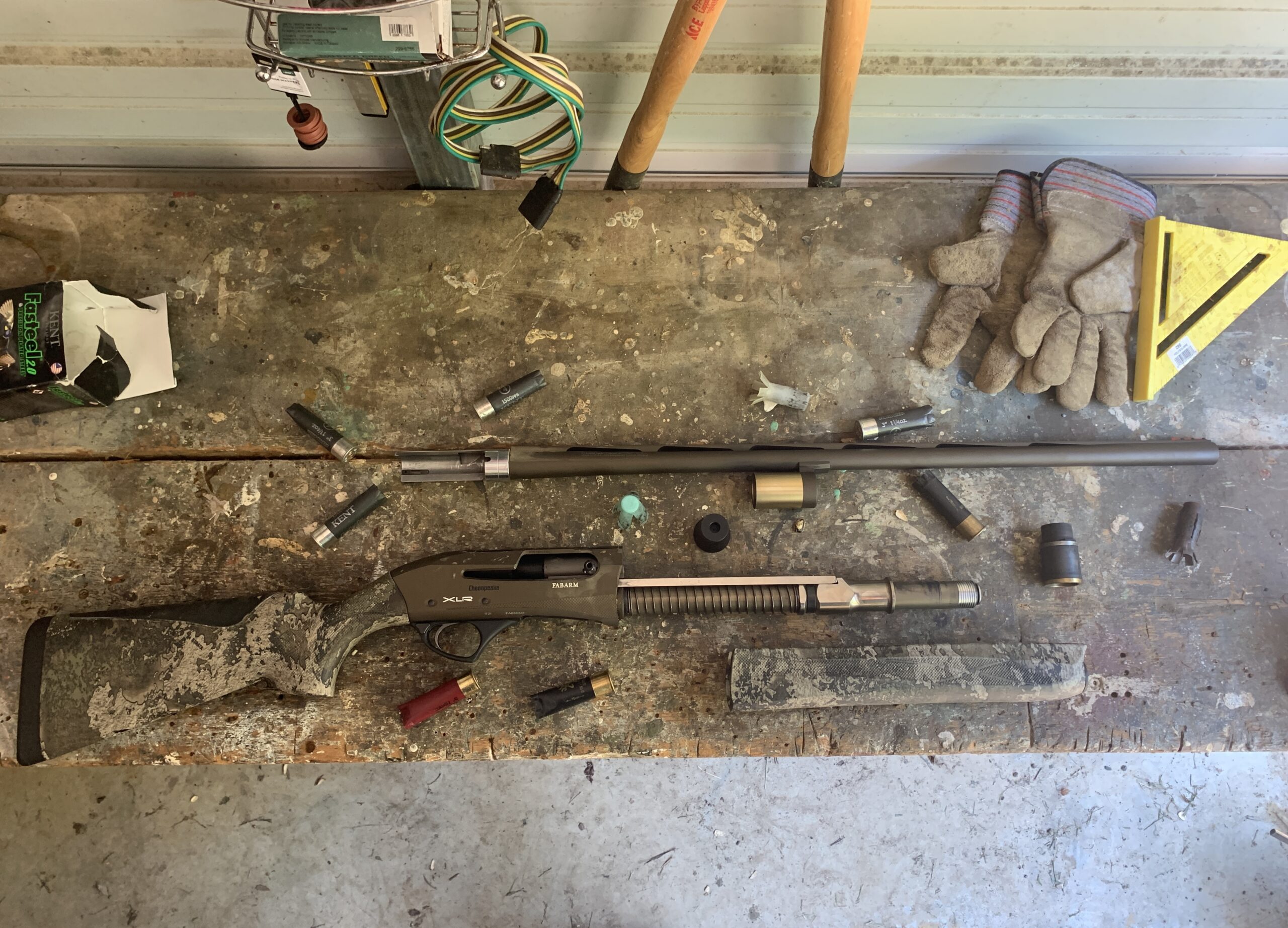
How the Fabarm Chesapeake Handles
The Chesapeake is a weight-forward shotgun, typical of gas operated smoothbores because the gas piston slides over the magazine tube, which is in the front of the gun. Fabarm also uses a heavy-duty action bar system that adds heft to the Chesapeake. However, the 3-inch auto-loader weighs under 7 pounds, so there’s not much to complain about when you’re carrying this gun afield. And though some prefer a more centrally-balanced shotgun, with the weight distributed between their hands, I’ll take a little more in the front—it helps keep me swinging through the bird. You just need to be extra diligent not to tip the barrel downward as you mount—easy to do with a weight forward shotgun. If you dip the muzzle, you’ll make a “check mark,” dropping and then having to raise the barrel. It’s harder to get on target than if you simply move the muzzle to the space in front of the clay or wild bird.
My first round of skeet—I shoot low gun—with the Fabarm was a bust because I was trying to get it to function after having left it dirty the previous day. But once the gun was up and running, I shot it well, scoring a 23 and 22 in the final two rounds. The Chesapeake has a .435-inch-wide vent rib and I noticed while shooting that it served almost like a runway leading to the front edge of the target. I don’t typically use the rib as a guide while shooting, but it was helpful to have a reference point. If I kept that big, flat rib in front of the target, I crushed it.
There was also a green plastic insert (other colors are available or you can remove it) at the back of the action that you can use to make sure your cheek is firmly on the stock and aligned with the rib. Some may find it obtrusive, but I felt like it kept my eye where it needed to be.
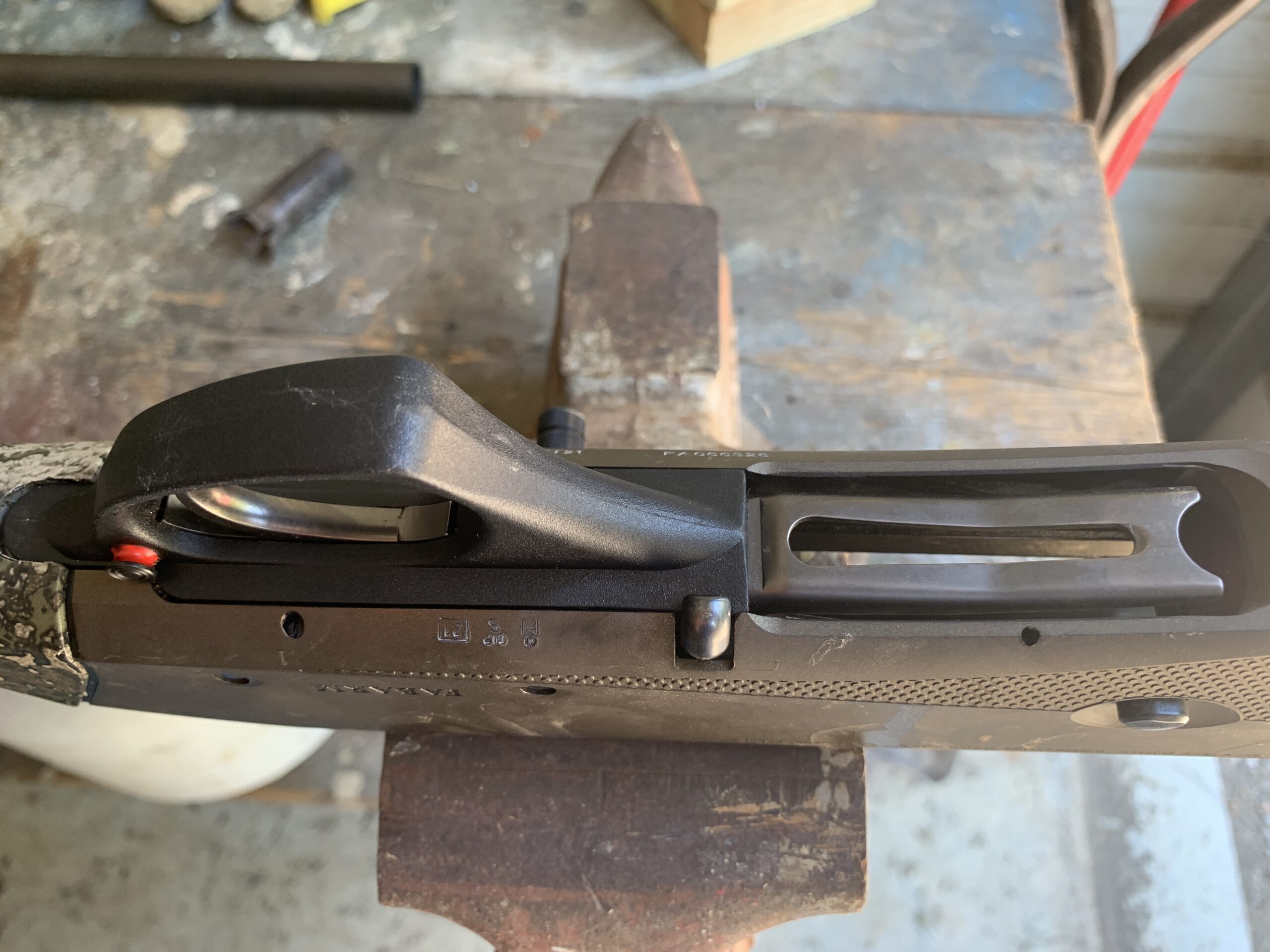
Gun Controls and Exterior Finish
There are three things the average duck hunter will find slightly different on the Chesapeake than other competing semi-autos. The first is the fore-end cap is shaped like a miniature ice-cream cone. It’s design and the small slits cut into the cap, make it easy to twist off and on. I was able to get a better grip on it and twist the cap off more easily than any other auto I have shot outside of the Beretta A400 Xtreme Plus, which has a half-turn cap.
The bolt-release button is located on the left side of the action. I handed the gun over to brother during pattern testing to let him shoot it, and after placing the first round in the chamber, he looked at me quizzically and asked, “how the hell do you close this thing?” So, it may be annoying for some at first to remember they need to reach to the left side of the gun to close the action. To open the action, there is a small lever—also on the left side of the action—you push outward. It’s not an inconvenient feature, but again, you will have to get used to it.
Like many of today’s auto-loaders, the Fabarm includes an over-sized charging handle, trigger-guard, cross-bolt safety, and roomy loading port, so you don’t catch your thumb and can easily insert a shell into the magazine with gloves on. To unload the magazine, there is a small lever you depress on the right side above the mag tube.
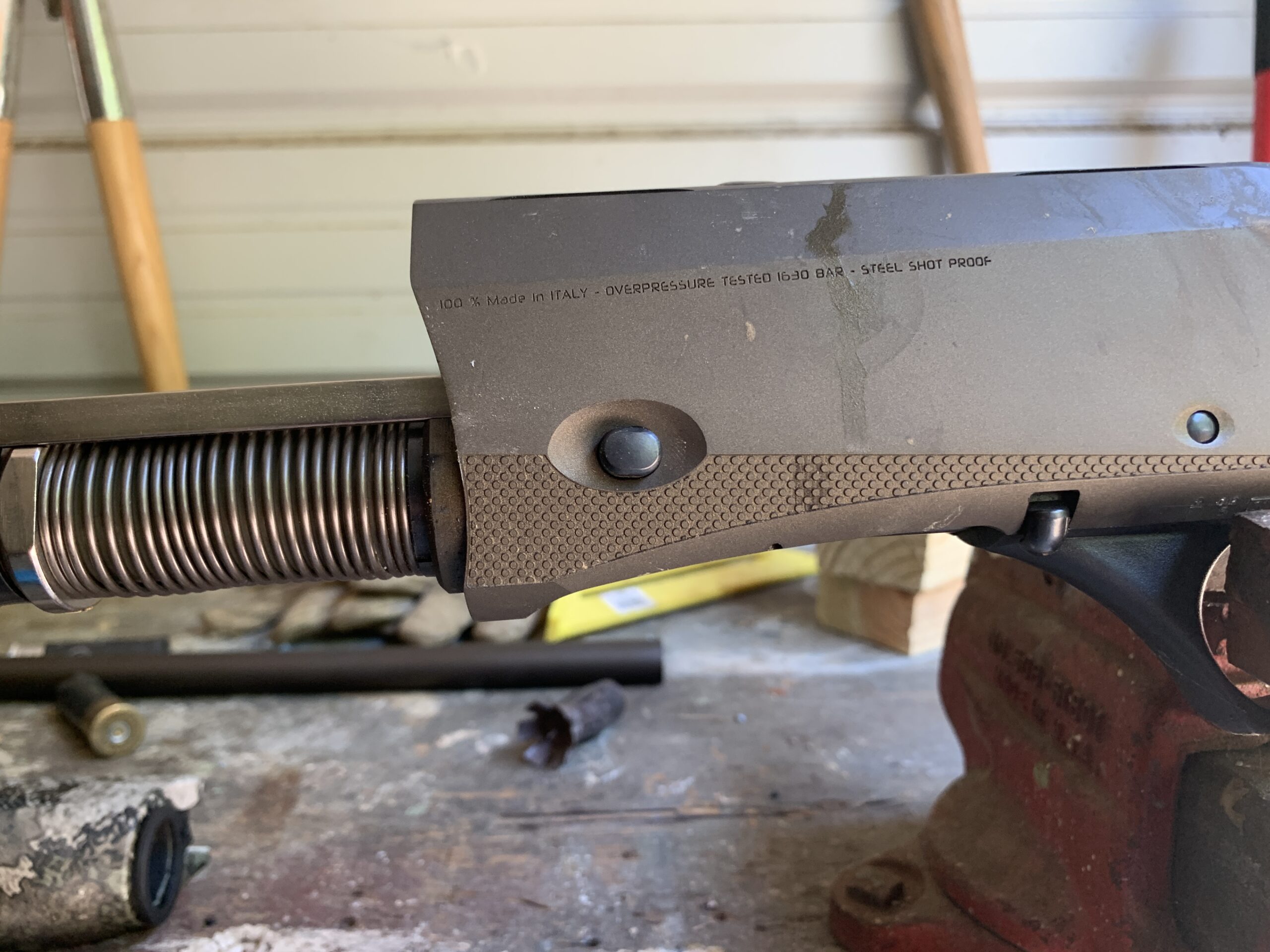
There is a ¾-inch recoil pad and thin rubber cheek weld that mitigated felt recoil well when I shot the 1- and 1¼-ounce loads, but the 1 3/8-ounce bismuth offering from Federal had more kick. It was a manageable amount of recoil, but you could feel the difference. That’s also the price you pay for shooting most 3-inch production bismuth shotshells. If you don’t enjoy the recoil they produce, step down to a lower charge weight in a 2¾-inch shell.
The receiver and barrel are finished in a bronze Cerakote and the stock and fore-end are coated in True Timber Strata camouflage. The checkering on the pistol grip and fore-end are abrasive, which is a plus when hunting in cold weather so you can firmly grip the gun. But on the skeet range in the dead of summer, it was like holding onto steel wool.
Fabaram’s Specialized Steel Barrels
The Tribore HP barrel system is the pride of Fabarm. Many gunmakers outsource their barrels, but Fabarm drills their own chrome molybdenum steel—a corrosion-resistant alloy that can stand up to high pressures and temperatures—barrels from a solid block of steel. Fabarm also overproof tests all its guns to 1630 BAR (1370 BAR is normal) to ensure the strength of the bore and action. One BAR equals 14.5 pounds per square inch (psi), so every Fabarm is built to handle over 23,000 psi. The bore is also tapered from 18.7mm (.736 inches) to 18.4mm (.724 inches) before the payload reaches the Inner HP choke, which Fabarm says is the key ingredient in making their guns pattern so effectively.
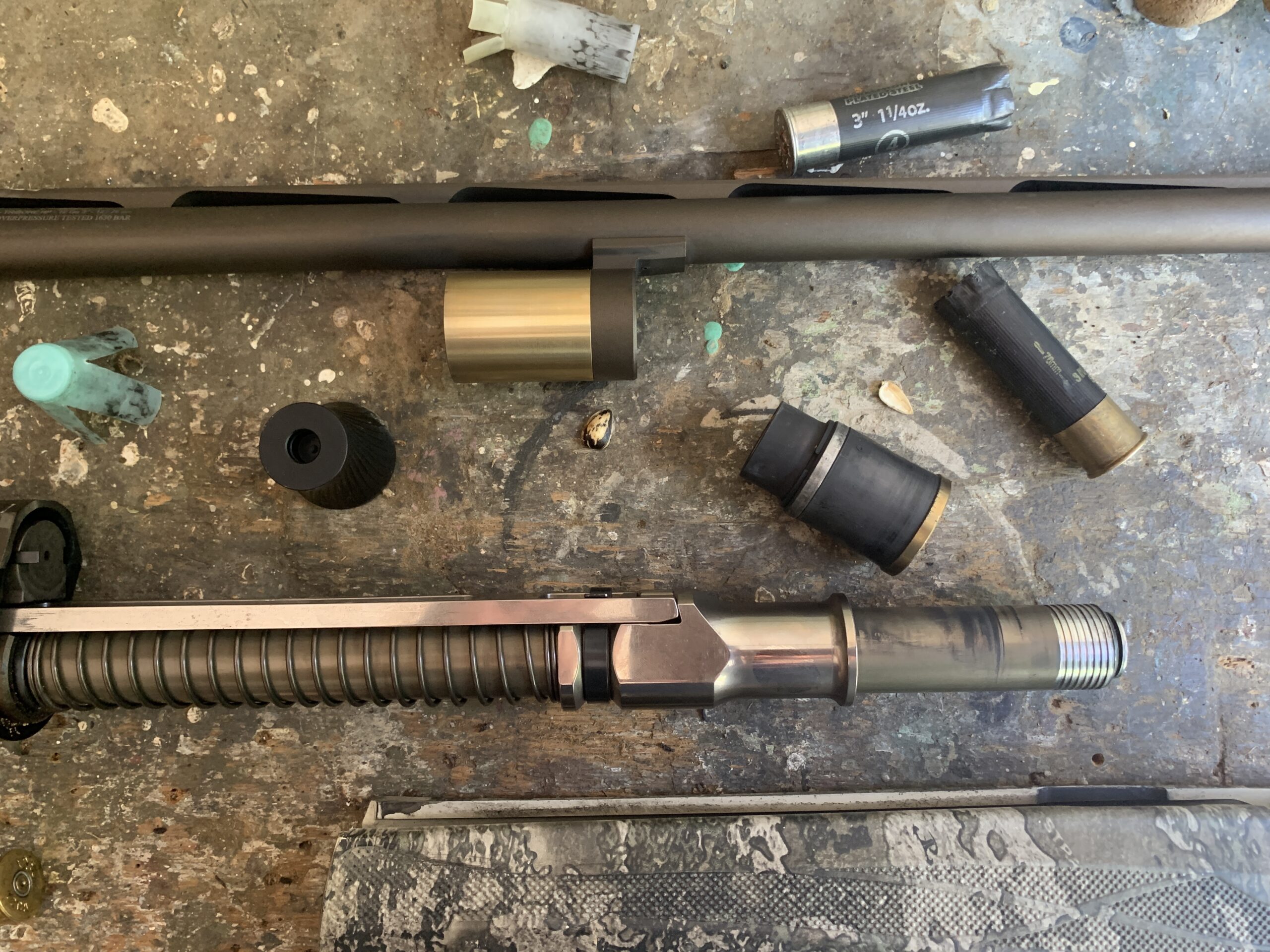
Fabarm’s Gas-Driven Operating System
When I picked the Chesapeake up at the gun shop it was in two pieces. The first thing I noticed while putting it together was the quality of the thick steel chromed action bars that drive the bolt rewards after the proper amount of gas is bled from the barrel. There are some equally expensive gas driven shotguns that rely on a much cheaper plastic tube that slides over the magazine, so it was impressive to see such attention to detail on a part that is integral to the gun’s operation.
The Pulse Piston gas system is responsible for setting those action bars in motion. When the shooter fires a shotshell, the propellants enter a dual port system housed under the barrel. The pressure those gases put on the piston force the bolt open, eject the spent hull, and allow the lifter to bring a fresh round into battery. When you shoot a heavy load—like 3-inch 1 3/8-ounce bismuth—the elastomer on the back half of the piston expands and slows down the action rods so you don’t feel as much recoil.
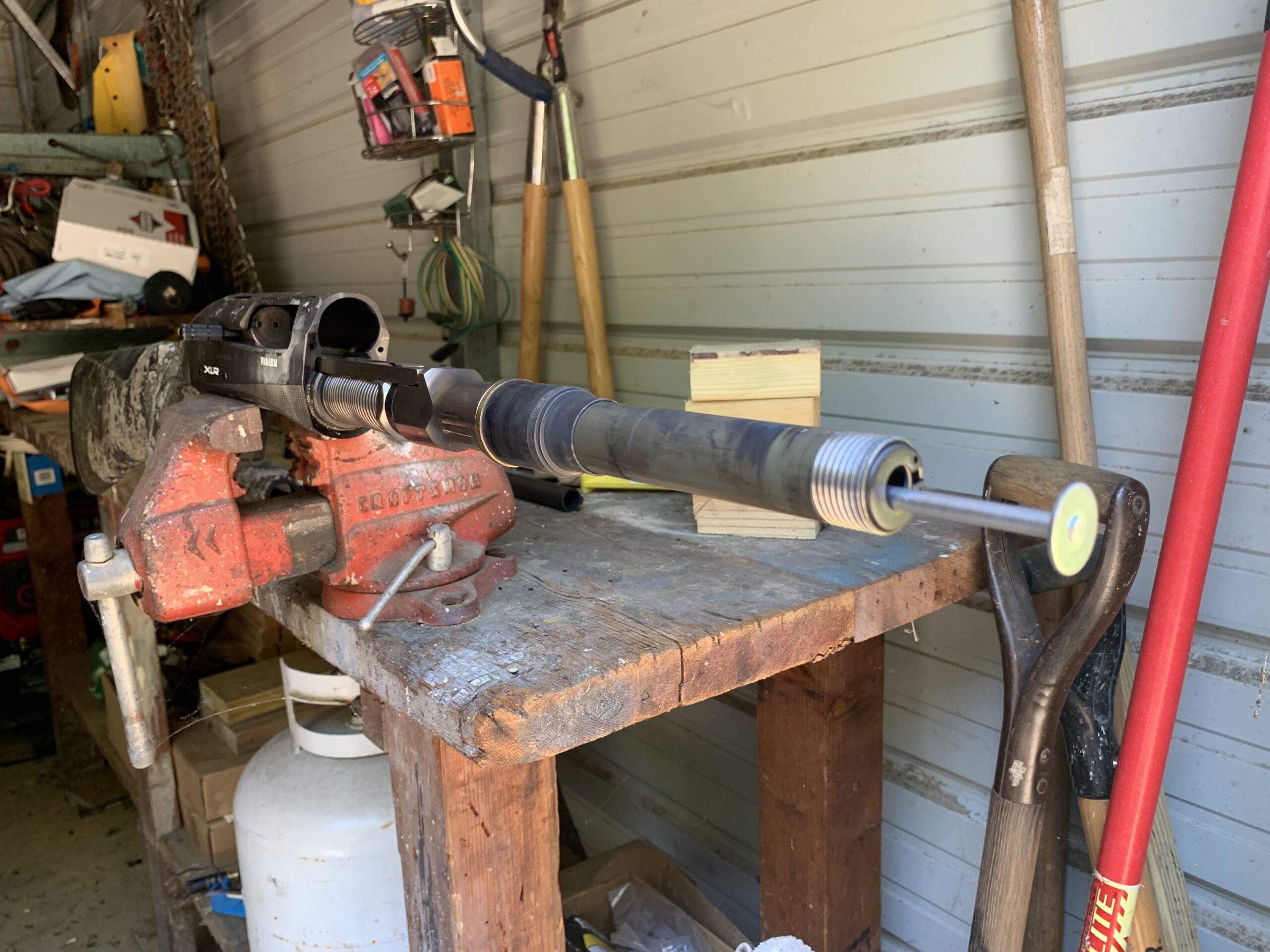
The action return spring conveniently slides over the magazine tube and sits behind the action bars, but you must remove the bolt to access it. To remove the bolt, press down on the bolt-release button, pull out the charging handle, and free the action bars from the bolt. The magazine plug is simple to take out. A round steel plate is attached to the plug and sits on top of the magazine cap, so you don’t have to pull the spring from the mag to remove it.
There are two quirks in disassembling and assembling the Chesapeake. First, you cannot insert or dislodge the barrel from the action if the bolt is open. And be certain the fore-end is secured tight to the front of the action before you shoot the gun. Sometimes it will not fit flush, and you need to push up on it, then finish tightening the fore-end cap.
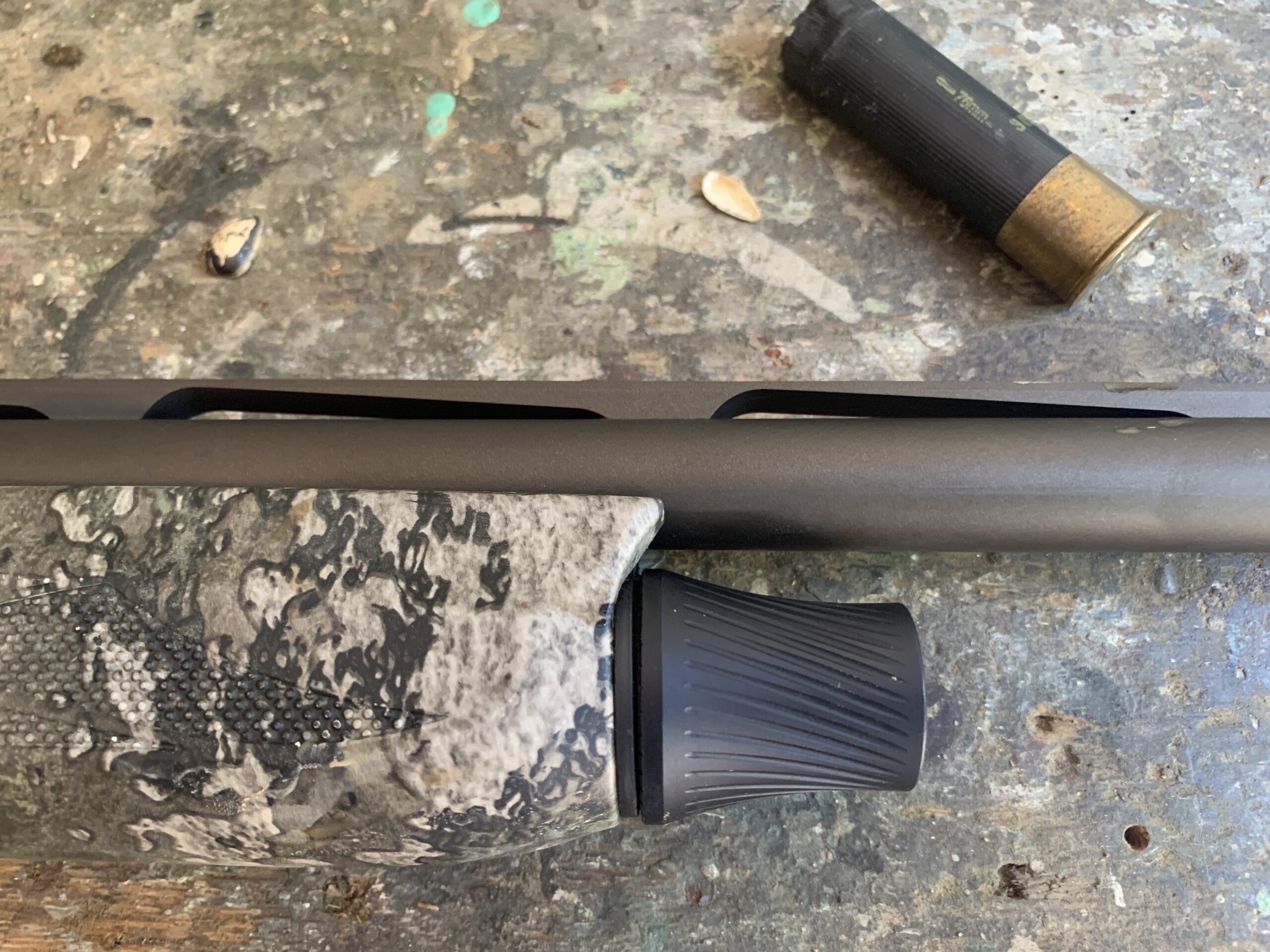
Is the Fabarm XLR5 Chesapeake Versatile?
Most duck hunters buy an auto-loader with the expectation that they will be able to purchase an aftermarket extension magazine tube for the spring snow goose conservation order. And Briley does offer two, four, and six-round extension for the XLR5 platform. It’s also possible to mount a Picatinny rail to the Cheasapeake. There are four cuts—two on each side of the action—that allow for a rail in case you want to add an optic for turkey season. You could also deer hunt with the Chesapeake during slug-gun season, but again it’s not intended for that pursuit. The Fabarm will serve upland bird and small game hunters well; it’s a light enough 12-gauge that you won’t mind carrying it across a CRP field to flush a rooster or amongst the hardwoods and brush piles to shoot a rabbit.
Read Next: The Best Duck Hunting Shotguns for Waterfowlers
Final Thoughts
If you’re going to spend $2,000 on a current production auto-loader, there are only two other Italian-made guns that can compete with the XLR5—Benelli’s Super Black Eagle 3 and Beretta’s A400 Xtreme Plus. I’ll leave it to you to decide which of the three is worth your hard-earned money. But you get what you pay for in the Chesapeake. It’s a well-made repeater that doesn’t really skimp on any component, except for the plastic trigger group. The operating system, superior barrel strength, attention to detail, and overall functionality make the Fabarm one of the best 3-inch autos to ever come out of Italy.

